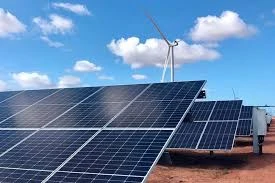Understanding Solar Panel Dimensions and Their Energy Capacity for Efficient Installation
Understanding Solar Panel Size and Capacity A Comprehensive Guide
As the world increasingly turns towards renewable energy sources, solar power has emerged as a popular and practical solution. One essential factor in maximizing the benefits of solar energy systems is understanding the size and capacity of solar panels. This article aims to provide clarity on these two critical aspects and their implications for homeowners and businesses looking to invest in solar energy.
What is Solar Panel Size?
Solar panel size refers to the physical dimensions of the panel itself. Standard residential solar panels are typically around 65 inches by 39 inches (approximately 1.65 m²), varying in thickness and weight. Larger panels, known as bifacial models, may be used in commercial installations and can range significantly in size. The physical size of a solar panel has implications for its installation, including the space required for mounting and the overall aesthetics of the solar array on a rooftop.
What is Solar Panel Capacity?
Solar panel capacity, usually measured in Watts (W), refers to the amount of electrical power a panel can produce under standard test conditions. The capacity of a solar panel is largely determined by the quality and efficiency of the solar cells used in its construction. For instance, traditional panels might have a capacity ranging between 250W and 400W, while newer, high-efficiency models can reach capacities exceeding 500W.
Capacity not only determines how much electricity a panel can produce, but it also affects the overall performance of a solar energy system. A higher capacity panel will produce more electricity in the same amount of sunlight compared to a lower capacity panel, making it a more efficient choice for limited spaces.
The Relationship Between Size and Capacity
solar panel size and capacity

While the size of a solar panel contributes to its capacity, these two factors are not always directly proportional. Technological advancements have led to the development of more efficient solar cells that can generate more power without significantly increasing the size of the panel. This means that smaller panels can sometimes have higher capacities than larger ones, depending on the technology used.
For example, monocrystalline panels tend to offer higher efficiency rates and greater power output compared to polycrystalline panels of similar sizes. Therefore, when considering solar panels, it’s essential to evaluate both size and capacity in conjunction with one another to understand the overall potential of a solar energy system.
Determining Your Needs Size and Capacity Considerations
When deciding on solar panels for your home or business, you must assess your energy needs. To calculate the required capacity, consider your electricity consumption and available roof space. Typically, a household will require between 5 kW to 10 kW of solar capacity, translating to about 15 to 30 panels, depending on the capacity of each panel.
Furthermore, consider the location and direction of your installation. Roofs with optimal sun exposure will yield better energy production, allowing for a smaller number of panels to achieve higher capacity.
Conclusion
In summary, the size and capacity of solar panels are fundamental considerations for anyone looking to transition to solar energy. Understanding these two aspects will not only help you choose the right panels for your specific needs but also maximize the efficiency and return on investment of your solar energy system. As technology continues to evolve, the future of solar energy looks promising, making now an excellent time to explore the benefits of going solar.
-
Unlocking Energy Freedom with the Off Grid Solar InverterNewsJun.06,2025
-
Unlock More Solar Power with a High-Efficiency Bifacial Solar PanelNewsJun.06,2025
-
Power Your Future with High-Efficiency Monocrystalline Solar PanelsNewsJun.06,2025
-
Next-Gen Solar Power Starts with Micro Solar InvertersNewsJun.06,2025
-
Harnessing Peak Efficiency with the On Grid Solar InverterNewsJun.06,2025
-
Discover Unmatched Efficiency with the Latest String Solar InverterNewsJun.06,2025







